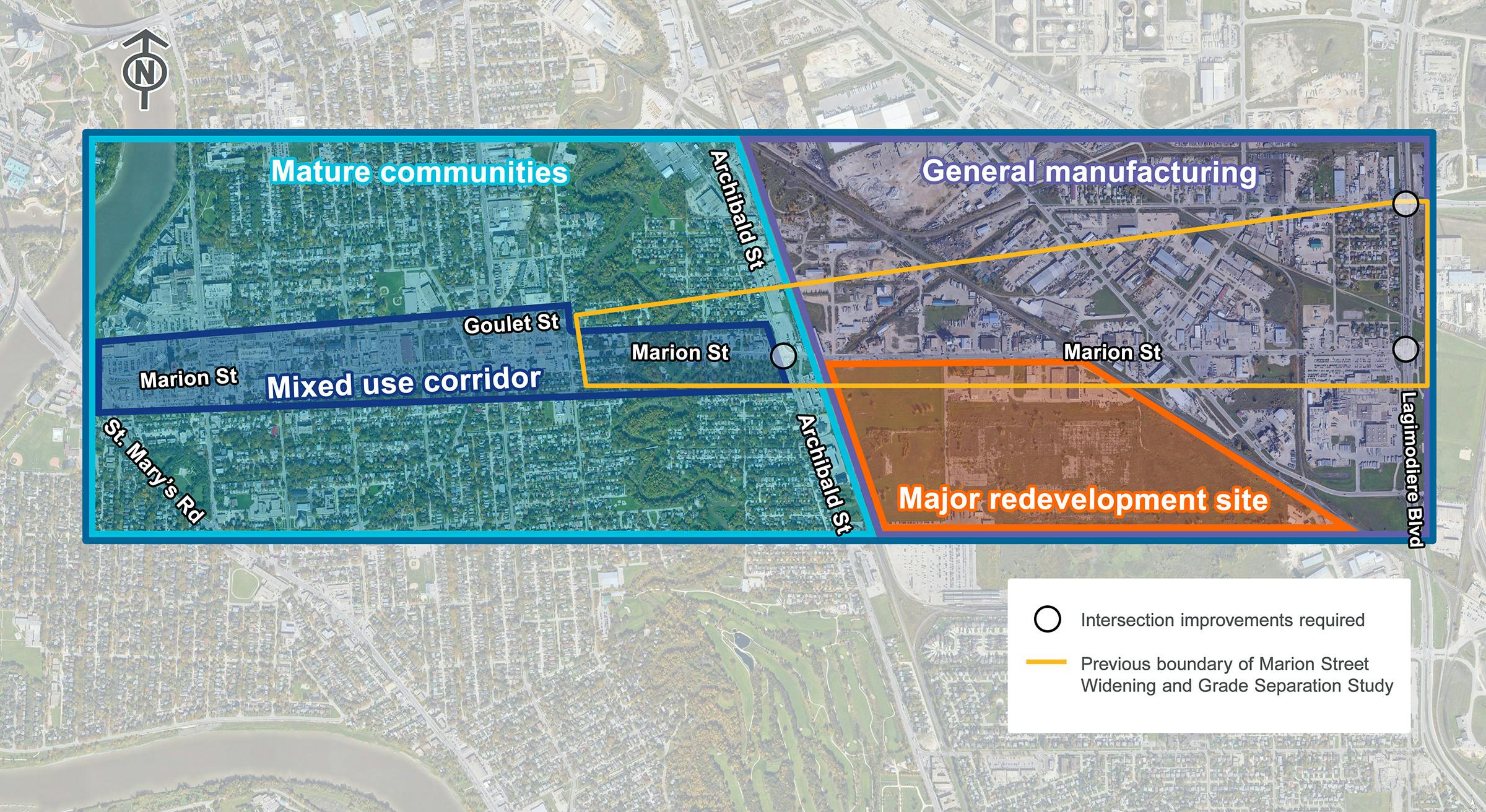In 2014, the City of Winnipeg undertook a Marion Grade Separation and Widening Study. The goal of the study was to improve traffic flow and capacity for motor vehicles from the east limit of Marion to Goulet Street. When the study concluded in 2016, five options were explored. The design presented to residents included significant roadway alignment changes, including an interchange and grade separation of the CPR Emerson line at Archibald Street and Marion intersection, among other changes. The project did not move forward due to excessive cost, scale, and intrusiveness of the project in the community. Throughout the study, we heard that the focus was too narrow to discuss some of the broader traffic issues in the neighbourhood.
In 2019, the City began a new study, referred to as the Moving on Marion Street project. Phase 1 of the project undertook pre-engagement planning with the community to build and confirm project objectives, and to test and confirm project notification methods and engagement techniques to ensure they were designed to meet community needs.
The City has since redefined the project scope and is continuing to identify potential cost-effective solutions to improve safety, traffic flow, and livability in the area – focuses that were not part of the 2014 study. The project scope has been expanded to encompass three interrelated areas within the neighbourhood, each with unique uses and needs. Implementing any change within one area requires changes to another to ensure safety, appropriate use, and traffic flow in the neighbourhood.
The West Segment of the Marion corridor includes the Marion-Goulet couplet, which serves as a neighbourhood main street - supporting a mix of uses, functioning as a place to live, work and play; as well as from Youville Street to Archibald, a transitional zone from commercial and residential, to manufacturing and light industrial.
The East Segment of the Marion corridor serves primarily as a general manufacturing and industrial thoroughfare from Lagimodière to Archibald. All areas of the Marion corridor serve as a major city route, connecting neighbourhoods and transporting people, goods and services with diverse needs.
The plan will take into consideration stakeholder input (collected through consultation meetings and working sessions), public engagement feedback and a variety of statistical data analyses.









